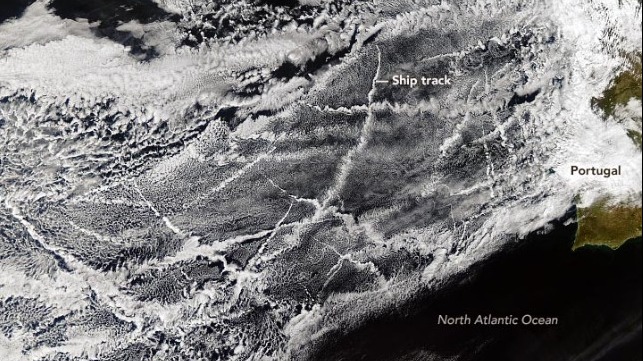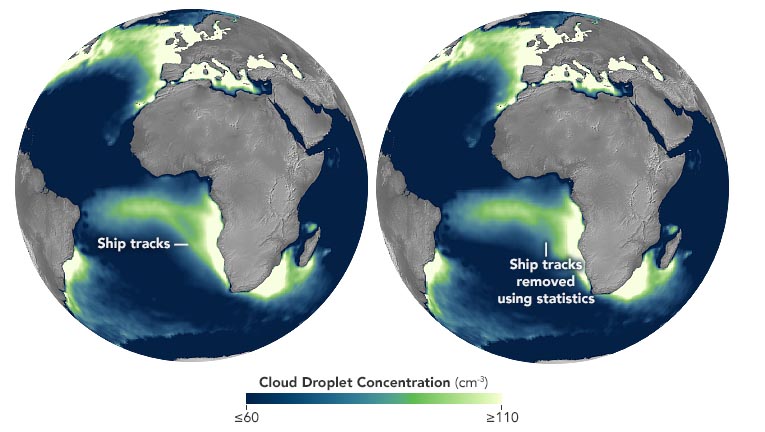Scientists Measure Cloud Changes in Busy Ship Corridors

Researchers have measured for the first time exactly how ship emissions affect clouds at a regional scale. The results of the research confirmed earlier computer modeling studies that predicated a sizeable cooling effect due to shipping.
For decades, scientists have theorized that the long, thin cloud patterns referred to as “ship tracks” resulting from the small airborne particles emitted by ships might alter climate by affecting the amount of sunlight reaching the earth’s surface. A team lead by the University of Washington atmospheric scientist Michael Diamond and colleagues examined more than a decade of cloud patterns over a busy shipping lane in the southeast Atlantic that connects Europe to southern Africa and Asia.
The team measured the cloud properties inside the shipping corridor using satellite data and compared them to what they estimated the values would be without shipping activity. The scientists found that the shipping activity increased the number of cloud droplets over the shipping lane that in turn prevented about 2 Watts of solar energy from reaching each square meter of ocean surface along the shipping lane.
“If you look at a satellite image of a high-traffic shipping area when the weather conditions are right, you can clearly see bright lines of clouds right along where those ships are traveling and emitting aerosols," said Diamond. "Ship tracks are a prime example of how tiny particles of pollution in the atmosphere can influence cloud properties. The clearly visible ship tracks are only the tip of the iceberg, however, so our study looked at how shipping could affect cloud properties on average over a long time period.”

Using natural-color images of ship tracks over the southeast Atlantic Ocean as observed on by the Moderate Resolution Imaging Spectroradiometer (MODIS) on NASA’s Aqua satellite, the scientists compared the average cloud droplet concentrations from 2003 to 2015 during the cloudiest months for the region (September, October, and November) with the expected cloud droplet concentrations without shipping activity. The expected values were calculated based on statistical patterns from nearby areas. The team then calculated the difference in the amount of sunlight reflected back into space between the two scenarios using data from NASA’s Clouds and the Earth’s Radiant Energy System (CERES) instruments, which monitor the solar energy reflected by earth and the heat energy emitted by the planet.
Diamond explained that the aerosols from the ships create “seeds” in the atmosphere that water vapor can latch onto and condense into small cloud droplets. These smaller droplets make clouds brighter so that they reflect more sunlight, which creates a local cooling effect at the planet’s surface.
“That change is small on a regional scale, but it could be enough to affect global temperatures if the same phenomenon occurs worldwide,” according to study co-author Hannah Director of the University of Washington. When the team scaled their findings across the planet, they found that changes in low-lying clouds from all industrial pollution sources could block about 1 Watt of energy per square meter globally. For context, greenhouse gases from industrial activities have trapped roughly 3 Watts per square meter.
“Cloud changes caused by industrial pollution have produced a global cooling effect that is about one-third as strong as the warming from increased greenhouse gases,” said Diamond.
The algorithms developed for this study the scientists believe could be applied to study other anthropogenic sources of pollution around the world. “We can use a similar methodology to determine the effects of other human sources of aerosols like power plants,” said Diamond. “We could model the world with and without various human activities and better understand our impact on Earth's climate.”
